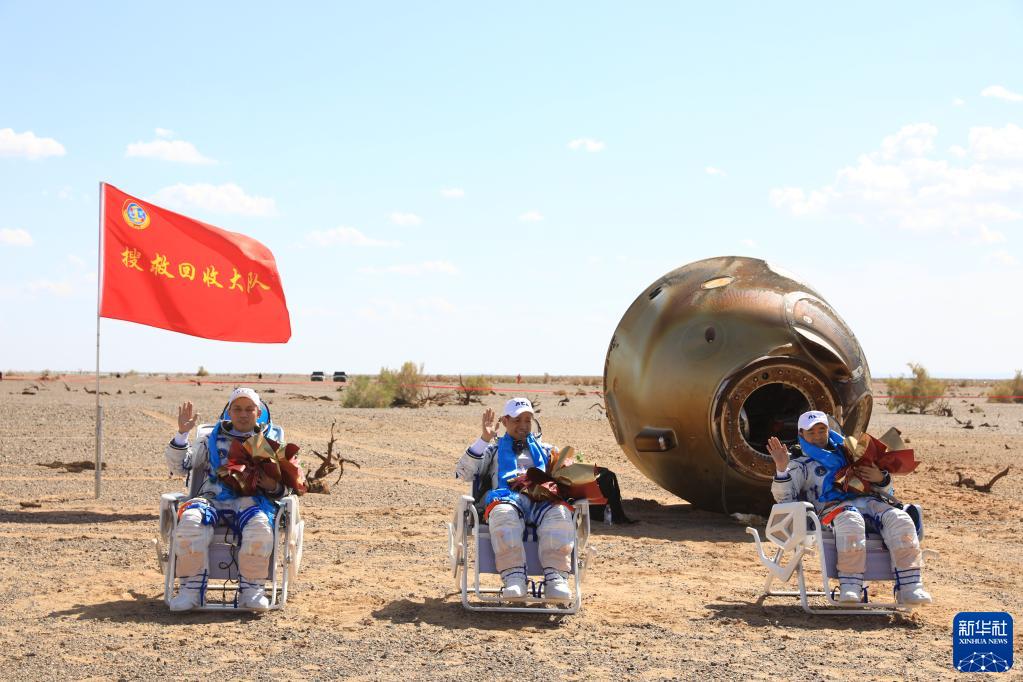On Friday, Sept. 17th, three Chinese astronauts returned safely from space following a three-month stay aboard the new Tiangong space station. This was a major milestone for the Chinese Manned Space (CMS) program, which beats its previous record for the longest crewed mission to space. Whereas the Shenzhou 11 mission (2016) lasted 33 days, the crew of Tang Hongbo, Nie Haisheng, and Liu Boming spent a total of 92 days in orbit.
The astronauts successfully landed in their Shenzou 12 capsule at the Dongfeng Landing Site, located in the Gobi Desert in the autonomous region of Inner Mongolia. According to a statement issued by the CMS, the astronauts safely exited the capsule and were in good physical condition. They were then flown to Beijing on a mission plane, where they were greeted by Li Shangfu, the commander of China’s crewed space project and the project leaders.

As the state-run Xinhua News Agency stated in a recent press release:
“Three Chinese astronauts, the first sent to orbit for space station construction, have completed their three-month mission and returned to Earth safely on Friday. The return capsule of the Shenzhou-12 manned spaceship, carrying astronauts Nie Haisheng, Liu Boming, and Tang Hongbo, touched down at the Dongfeng landing site in north China’s Inner Mongolia Autonomous Region, according to the China Manned Space Agency (CMSA).”
The three astronauts launched in June and were the first of four planned crewed missions to the station during the construction period (which is expected to be complete sometime in 2022). This was China’s first crewed mission to space in five years and represented multiple milestones for the China National Space Administration (CNSA). For one, the astronauts conducted several important station-related tasks while aboard the station.
“During the orbiting flight, two astronaut out-of-vehicle activities were carried out, and a series of space science experiments and technical tests were carried out,” said the CMS in another statement. “In orbit, the key technologies for the construction and operation of space stations such as rail repairs [sic]. The complete success of the Shenzhou 12 manned mission has laid a solid foundation for the construction and operation of the subsequent space station.”

This mission was also the first time personnel were dispatched from the Dongfeng Landing Field to perform a search and recovery mission involving a crewed spacecraft. But most importantly, this was the first mission to the Tiangong (“Heavenly Palace”) space station since it was launched in April of 2021. This third-generation habitat builds on the experiences learned from the Tiangong-1 and Tiangong-2 stations.
The space station currently consists of the Tianhe Core Module (“Harmony of the Heavens”), which will be augmented with the addition of the Laboratory Cabin Modules (LCMs). These consist of the Wentian (“Quest for the Heavens”) and Mengtian (“Dreaming of the Heavens”) modules, which are scheduled to launch during the summer of 2022. Once these are integrated, China hopes to conduct a full range of scientific experiments and research in orbit.
These activities are meant to rival those that have been conducted aboard the International Space Station (ISS), which has been in orbit for 22 years and is due to be decommissioned by 2024 at the earliest. While it is unclear if the Tiangong space station will remain in orbit that long (or after the ISS retires), it is clear that China plans to maintain a space station in orbit indefinitely.
Further Reading: digitaltrends, Xinhua


It’s great to see these guys return safely. What it means is that the technology for humans to safely leave Planet Earth is getting better and better everywhere. The future of travel to the stars is becoming more realistic every day. Congratulations to the Chinese astronauts.